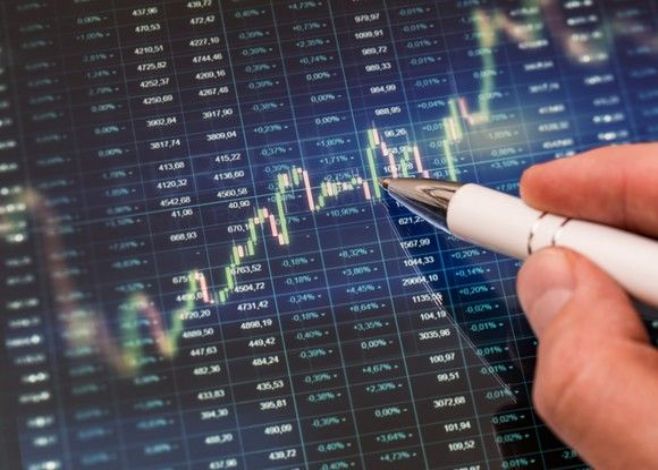
Chartered Market Technician (CMT) is a professional designation that confirms proficiency in technical analysis of the financial markets. To hold the designation, membership in the Market Technicians Association is required.
The CMT Association is a global credentialing body with nearly 50 years of service to the financial industry. The Chartered Market Technician® (CMT) designation marks the highest education within the discipline and is the preeminent designation for practitioners of technical analysis worldwide. Our market philosophy is grounded in behavioural economics and extends beyond classical pattern recognition techniques, including quantitative approaches to market research and rules-based trading system design and testing. Technical analysis provides the tools to successfully navigate the gap between intrinsic value and market price across all asset classes through a disciplined, systematic approach to market behaviour and the law of supply and demand.
To guide candidates in mastering a professional body of knowledge and in developing analytical skills;
To promote and encourage the highest standards of education.
To grant the right to use the professional designation of Chartered Market Technician (CMT)
to those members who successfully complete the Program and agree to abide by the CMT Code of Ethics.
In order to be granted your CMT designation, you must meet the following requirements
Successful completion of all three (3) levels of the CMT Exam.
Have been gainfully employed in a professional analytical or investment management capacity for a minimum period of
three (3) years and must be regularly engaged in this capacity at the time of successfully passing all three (3) levels of the CMT Exam.
1) The Technical Approach to Trading and Investing
2) Charts
3) The Dow Theory
4) The Dow Theory in Practice5. The Dow Theory’s Defects
5) The Dow Theory in the 20th and 21st Centuries
6) Important Reversal Patterns
7) Important Reversal Patterns – Continued
8) Important Reversal Patterns – The Triangles
9) Important Reversal Patterns – Continued
10) Other Reversal Phenomena
11) Short‐Term Phenomena of Potential Importance
12) Consolidation Formations
13) Gaps
14) Support and Resistance
15) Trendlines and Channels
16) Major Trendlines
17) Trading the Averages in the 21st Century
18) Technical Analysis of Commodity Charts
19) Technical Analysis of Commodity Charts, Part 2
20) Advancements in Investment Technology
21) Choosing and Managing High Risk Stocks
22) Two Touchy Questions
23) Stop Orders
24) What Is A Bottom – What Is A Top?
25) Trendlines in Action
26) Use of Support and Resistance
27) Not All in One Basket
28) Balanced and Diversified
29) Trial and Error
30) How Much Capital to Use in Trading
31) Application of Capital in Practice
32) Portfolio Risk Management17
32) Stick to Your Guns
1) Introduction to Technical Analysis
2) The Basic Principle of Technical Analysis – The Trend
3) History of Technical Analysis
4) The Technical Analysis Controversy
5) An Overview of Markets
6) Dow Theory
7) Measuring Market Strength
8) Temporal Patterns and Cycles
9) Flow of Funds
10) History and Construction of Charts
11) Trends – The Basics
12) Moving Averages
13) Bar Chart Patterns
14) Short-Term Patterns
15) Confirmation
16) Cycles
17) Elliott, Fibonacci, and Gann
18) Selection of Markets and Issues: Trading and Investing
19) Money and Risk Management
1) Financial Markets and the Business Cycle
2) Dow Theory
3) Typical Parameters for Intermediate Trends
4) Price Patterns
5) Smaller Price Patterns
6) One and Two Bar Price Patterns
7) Trendlines
8) Moving Averages
9) Momentum Principles
10) Individual Momentum Indicators I
11) Individual Momentum Indicators II
12) Candle Charts
13) Miscellaneous Techniques for Determining Trends
14) The Concept of Relative Strength
15) Price: The Major Averages
16) Price: Group Rotation
17) Time: Longer‐Term Cycles
18) Volume: General Principles
19) Volume Oscillators
20) Breadth
21) Why Interest Rates Affect the Market
22) Sentiment Indicators18
23) Applying Technical Analysis to the Theory of Contrary Opinion
24) Checkpoints for Identifying Primary Stock Market Peaks and Troughs
25) Automated Trading Systems
26) Technical Analysis of Global Stock Markets
27) Technical Analysis of Individual Stock
1) Introduction to Point and Figure Charts
2) Characteristics and Construction
3) Understanding Point and Figure Charts
4) Projecting Price Targets
1) MTA Code of Ethics
2) Technical Analysis of Stock Trends
3) Elliott Wave Principle
4) New Trading Systems and Methods
5) Technical Analysis The Complete Resource for Financial Market Technicians
6) Japanese Candlestick Charting Techniques
7) Investment Psychology Explained
8) Technical Analysis Explained
9) Evidence Based Technical Analysis
10) The Definitive Guide to Point and Figure
